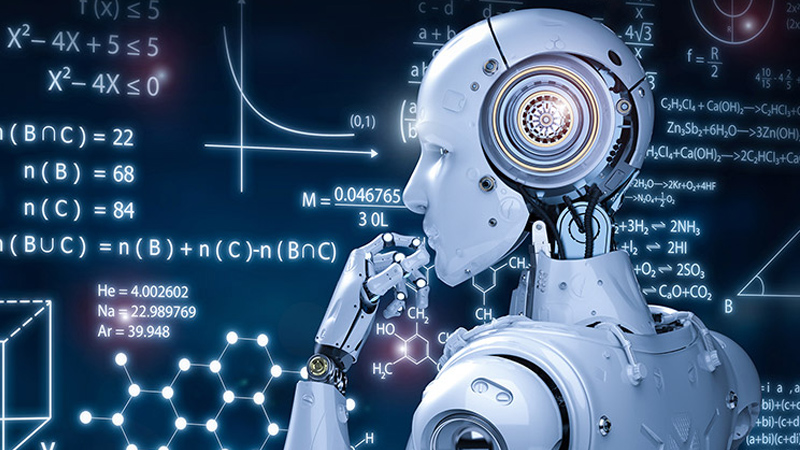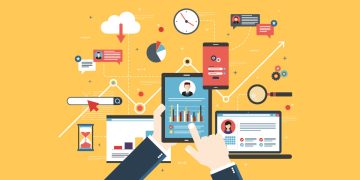Introduction: The Age of Intelligent Machines
In 1956, at the famous Dartmouth Conference, a handful of visionary scientists—John McCarthy, Marvin Minsky, Claude Shannon—gathered to explore the bold idea that “every aspect of learning or any other feature of intelligence can in principle be so precisely described that a machine can be made to simulate it.”
More than six decades later, artificial intelligence (AI) has transformed from an abstract concept into a defining force of the 21st century. From the algorithms recommending what we watch on Netflix to advanced large language models (LLMs) like GPT-5 that generate human-like text and code, AI is now woven into the fabric of daily life, global commerce, and even geopolitics.
This article examines the history, core technologies, applications, ethical dilemmas, economic impact, and future trajectory of AI, aiming to provide a panoramic understanding of this transformative technology.
I. A Brief History of AI
1. The Early Days: Logic and Symbolic AI (1950s–1970s)
- AI began as a quest to replicate human reasoning using symbolic logic.
- Early programs like ELIZA (1966) simulated conversation, while Shakey the Robot (1969) demonstrated rudimentary perception and planning.
- However, limited computing power and lack of data led to the first “AI winter” in the 1970s.
2. Expert Systems Era (1980s)
- The rise of rule-based systems—such as MYCIN for medical diagnosis—brought AI into commercial use.
- Companies invested heavily, but as these systems proved brittle and hard to scale, enthusiasm waned again.
3. The Machine Learning Revolution (1990s–2010s)
- The advent of statistical learning and increased computing capacity shifted AI away from hand-crafted rules toward data-driven models.
- Key breakthroughs included:
- Support Vector Machines (SVMs) for pattern recognition.
- Reinforcement learning for decision-making.
- Deep learning with neural networks, especially after 2012’s ImageNet competition, where convolutional neural networks achieved unprecedented accuracy.
4. The Modern AI Era (2017–Present)
- The introduction of the Transformer architecture (2017), the foundation of models like GPT, revolutionized natural language processing.
- Generative AI (e.g., text-to-image, text-to-video, code generation) has expanded the boundaries of what machines can produce.
- AI is now an essential component of scientific discovery, cybersecurity, finance, healthcare, and national security.
II. Core Technologies Behind AI
1. Machine Learning (ML)
- ML algorithms allow machines to identify patterns and make predictions based on data.
- Supervised learning (labeled data), unsupervised learning (clustering, dimensionality reduction), and reinforcement learning (trial-and-error strategies) form the backbone of modern AI applications.
2. Deep Learning
- Deep neural networks, inspired by the human brain, excel in perception tasks such as image and speech recognition.
- Specialized architectures:
- Convolutional Neural Networks (CNNs): excel in computer vision.
- Recurrent Neural Networks (RNNs) and Transformers: power natural language understanding and generation.
3. Natural Language Processing (NLP)
- NLP enables machines to comprehend, translate, and generate human language.
- Large language models like GPT-5 can write essays, summarize legal documents, draft code, and hold context-aware conversations.
4. Computer Vision
- Allows machines to interpret visual data, enabling applications in self-driving cars, medical imaging, industrial inspection, and facial recognition.
5. Reinforcement Learning
- Enables agents to learn optimal actions through rewards and penalties, crucial for robotics, autonomous vehicles, and game-playing AI like AlphaGo.
6. Generative AI
- Uses models like GANs (Generative Adversarial Networks) and diffusion models to create new content—art, music, synthetic data—raising both opportunities and ethical concerns.
III. Transformative Applications of AI
1. Healthcare
- AI systems analyze medical images for early detection of cancer, predict patient deterioration, and accelerate drug discovery.
- Personalized medicine is becoming a reality as AI integrates genomic data, lifestyle factors, and treatment outcomes.
2. Finance
- AI supports algorithmic trading, fraud detection, credit scoring, and customer service chatbots.
- Hedge funds increasingly rely on AI-driven predictive analytics to make investment decisions in milliseconds.
3. Transportation
- Autonomous vehicles use a combination of computer vision, sensor fusion, and reinforcement learning to navigate complex traffic environments.
- AI also optimizes supply chains and reduces logistics costs.
4. Manufacturing
- AI-powered predictive maintenance reduces downtime in factories.
- Robots guided by computer vision and machine learning perform precision assembly in industries like semiconductors and aerospace.
5. Climate Science and Agriculture
- AI models improve climate forecasts, optimize energy grids, and support sustainable farming practices by predicting crop yields and water needs.
6. Education
- Intelligent tutoring systems provide personalized learning pathways, adapt to students’ strengths and weaknesses, and expand access to quality education globally.
7. Defense and Security
- AI enhances cybersecurity threat detection and assists in military logistics, surveillance, and autonomous weaponry, raising urgent questions about ethics and global arms control.
IV. Economic and Social Impacts
1. Productivity Growth
- According to studies by McKinsey and PwC, AI could add trillions of dollars to global GDP by 2030, particularly in sectors like healthcare, manufacturing, and retail.

2. Job Displacement and Creation
- While AI automates routine tasks—potentially displacing millions of workers—it also generates new roles in AI development, data annotation, ethics compliance, and AI-powered services.
- The net impact depends on policy, education, and how quickly economies adapt.
3. Inequality and Access
- Unequal access to data, computing power, and AI talent risks widening the gap between developed and developing nations.
- Within countries, workers without digital skills face greater displacement risks.
4. Shifts in Global Power
- Nations leading in AI research, semiconductor manufacturing, and data ecosystems (e.g., the U.S., China, and increasingly India and the EU) gain significant economic and geopolitical leverage.
V. Ethical and Regulatory Challenges
1. Bias and Fairness
- AI can inherit biases present in training data, leading to discriminatory outcomes in hiring, lending, or law enforcement.
2. Transparency and Accountability
- The “black box” nature of deep learning models complicates efforts to explain decisions—crucial in healthcare, legal, and safety-critical applications.
3. Privacy Concerns
- AI’s appetite for data heightens risks of mass surveillance and personal privacy violations.
- Regulations like the EU’s GDPR and the emerging AI Act aim to set boundaries.
4. Autonomy and Lethal AI
- The development of autonomous weapons raises profound moral and legal dilemmas, including accountability for AI-driven harm.
5. Misinformation and Deepfakes
- Generative AI can be exploited to produce convincing fake images, videos, and news, threatening democratic processes and social trust.
VI. The Future of AI: Opportunities and Uncertainties
1. Toward Artificial General Intelligence (AGI)
- AGI aims to achieve human-level cognitive flexibility—able to learn and perform a wide range of tasks beyond narrow domains.
- While experts debate timelines, progress in scaling models suggests AGI may emerge within decades.
2. AI for Scientific Discovery
- AI has accelerated breakthroughs in protein folding (AlphaFold), materials science, and drug design, hinting at a future where machines assist in solving humanity’s toughest problems.
3. AI and Human Augmentation
- Advances in brain–computer interfaces (BCIs) and AI-driven prosthetics point toward enhanced human abilities—blurring the boundary between biological and artificial intelligence.
4. Global Governance and Cooperation
- Effective international frameworks will be critical to prevent AI arms races, ensure safety standards, and share benefits equitably.
- Proposals include UN-led AI safety councils and bilateral agreements on restricting autonomous weapon use.
5. Sustainable AI
- Reducing the energy footprint of large AI models is a growing priority, prompting innovations in hardware (neuromorphic chips) and software (model pruning and quantization).
VII. Preparing Society for the AI Era
- Reskilling the Workforce: Governments and corporations must invest in digital literacy, data science, and lifelong learning.
- Ethical Education: AI developers should be trained not only in technical skills but also in philosophy, ethics, and law.
- Inclusive Access: Expanding affordable internet, computing resources, and open-source AI tools can reduce the global AI divide.
- Strengthening Civic Institutions: Democracies must adapt regulations and oversight to maintain accountability in AI deployment.
- Public Engagement: Broader conversations about AI’s role in shaping the future should include educators, labor leaders, and marginalized communities.
Conclusion: Co-Evolving with Intelligence
AI is neither an unqualified blessing nor an inevitable threat. It is a human-made tool, reflecting our values, biases, and ambitions. How it reshapes the world depends not just on algorithms and hardware but on the choices we collectively make.
If guided by foresight and ethical principles, AI could help solve urgent global challenges—from climate change to disease eradication—while enhancing human creativity and productivity.
Conversely, neglecting its risks could deepen inequality, destabilize economies, and erode trust in democratic institutions.
The 21st century will be remembered as the era in which humans learned to coexist and co-evolve with intelligent machines. Our greatest task is to ensure that this partnership serves not only innovation but also justice, dignity, and shared prosperity.

















































